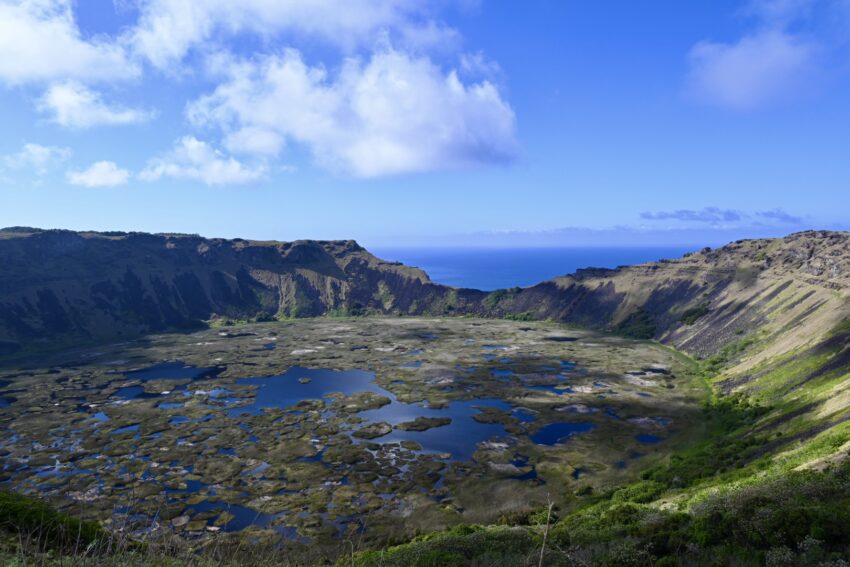Today’s Chronicle can be found here.
Up bright and early for an early morning landing – we are the second co-hort for the hike to Rano Kau, which means an 8:30 am departure.
Conditions had eased in the night, though a rogue wave nearly swamped one of our group member’s shoes as she stepped into the zodiac, and another guest had a minor stumble while boarding. Everyone kept their cool though, and we landed without incident.
We are at the same landing spot as yesterday, roughly a kilometre away from Hanga Roa. The Cloud has laid on regular shuttle busses, so we won’t have to walk into town. It’s not an insurmountable distance by any stretch, but we all expect to be walking enough during the course of the day.
Off the zodiacs and onto the bus, and then we set off. Just a small group of nine today, including two expedition team members (Damon and Samira) and local guide Hugo. A nice staff-to-guest ratio – much better than yesterday!
The drive took perhaps five minutes, and then we were off for our hike. Before we left the bus, we confirmed that the same bus would be picking us up at the end of the tour, and that we could leave our snorkelling bags there – which we could, thankfully.
The hike is roughly 4.6 km in length with 250 metres in elevation change. In contrast, the Terevaka hike clocked in at nearly 10 km in length and 360 metres in elevation change. I think we could have managed that but it would’ve been less enjoyable, particularly as there’s little shade and dusty conditions.
(Big thanks to my wife who has already hiked many of these routes using her iFit treadmill – her insights into route conditions has been invaluable as we’ve decided which excursions to take.)
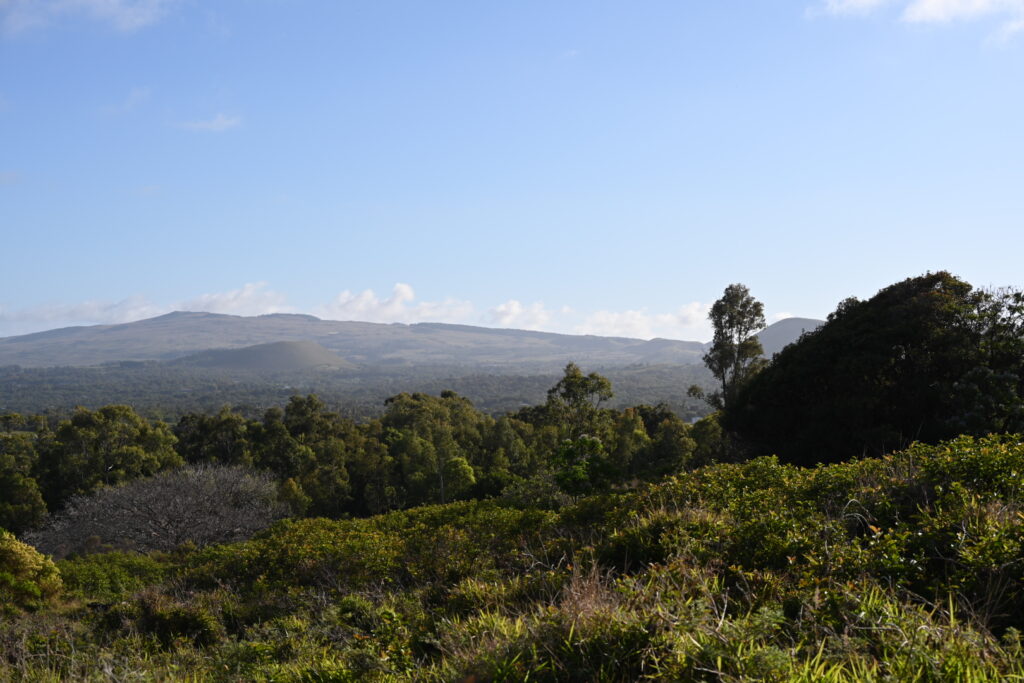
This was a pleasant route – the grade wasn’t too steep, and it was partly shaded with the occasional breeze making its way through the trees. Only nitpicks are that there’s a quite a lot of horse / cow manure on the path as well as a downed branched blocking an early section of the trail.
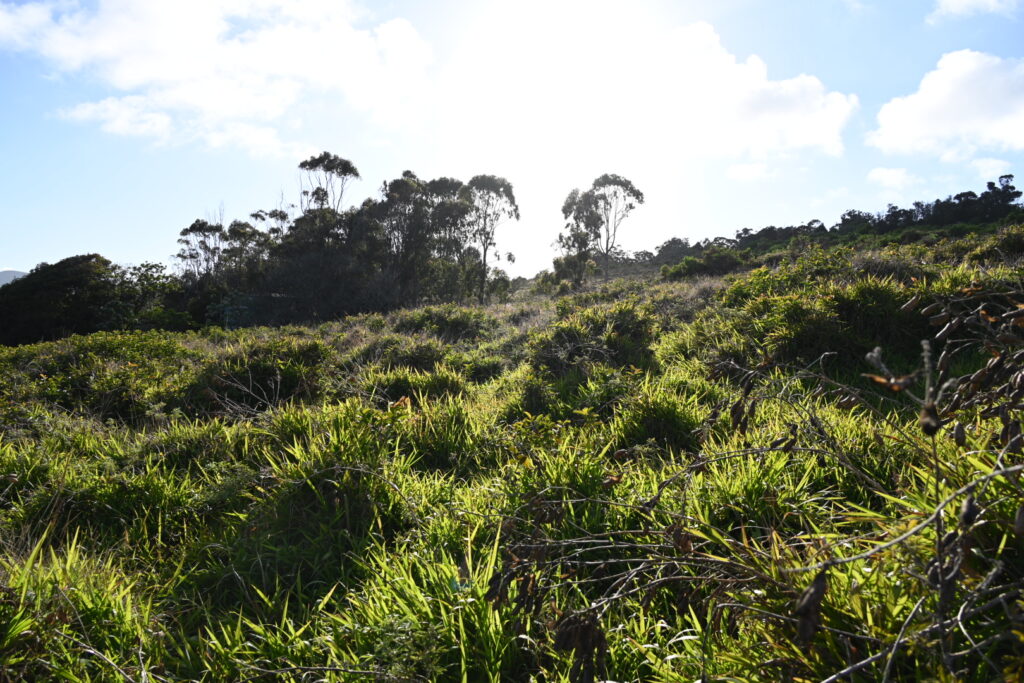
But mostly – pleasant and scenic.
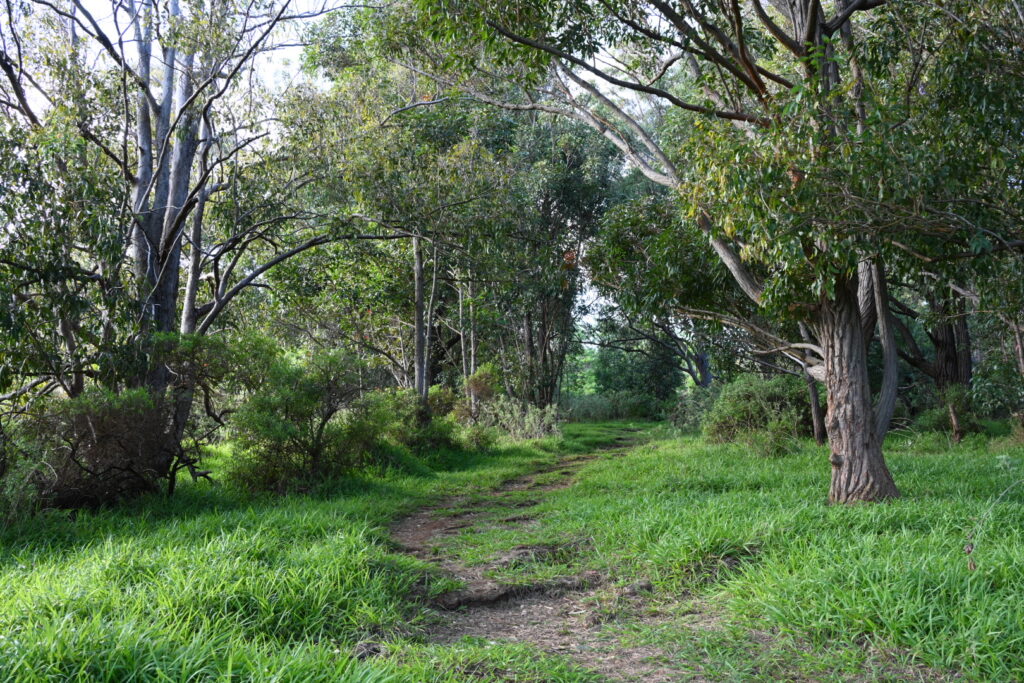
Virtually all trees on Rapa Nui are invasive or introduced species. The original palm tree (Paschalococos disperta) is now extinct – it was heavily harvested by the original Rapa Nui residents and the introduced Norwegian rat demolished the coconuts when it was introduced by Europeans preventing the remaining trees from propogating.
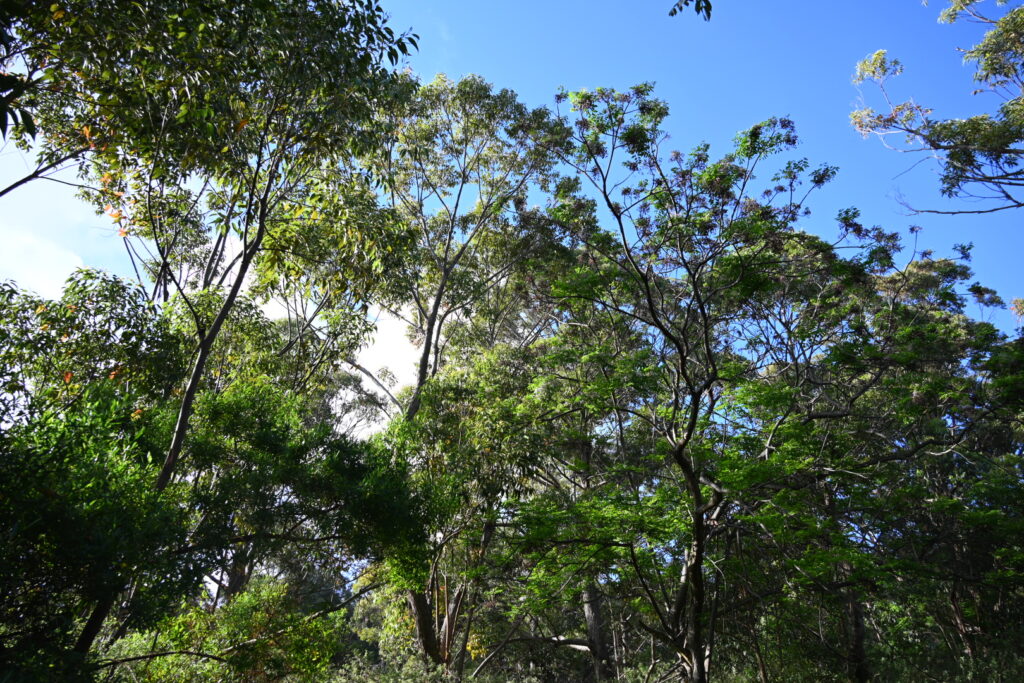
Looking back towards Teravaka – looks like an intriguing challenge, but we’re still glad we chose this route instead:
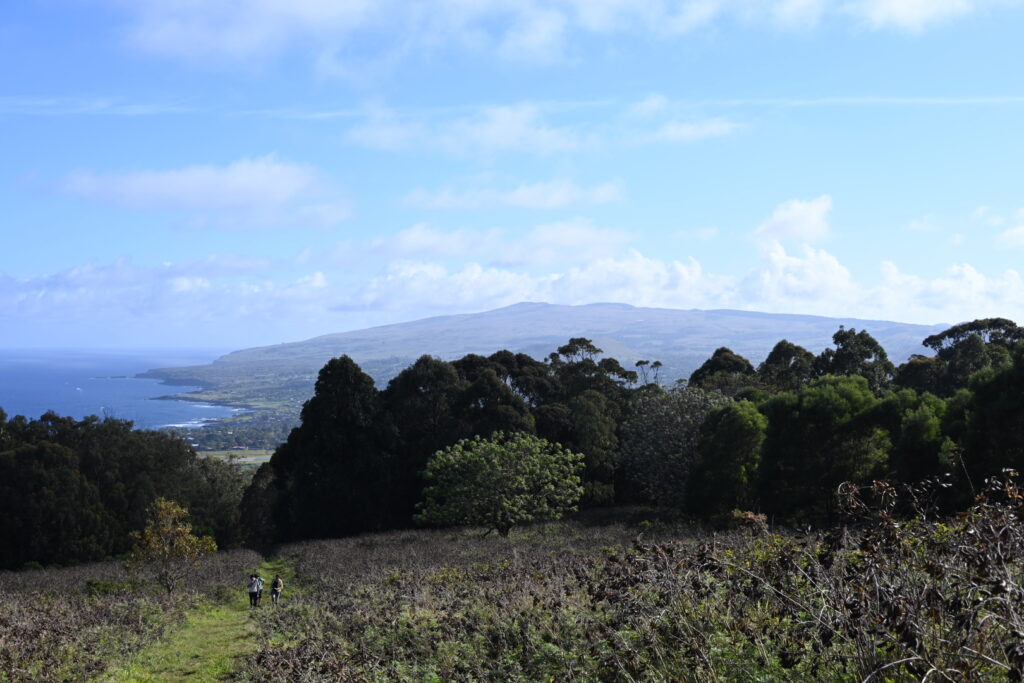
We seem to have acquired a dog:
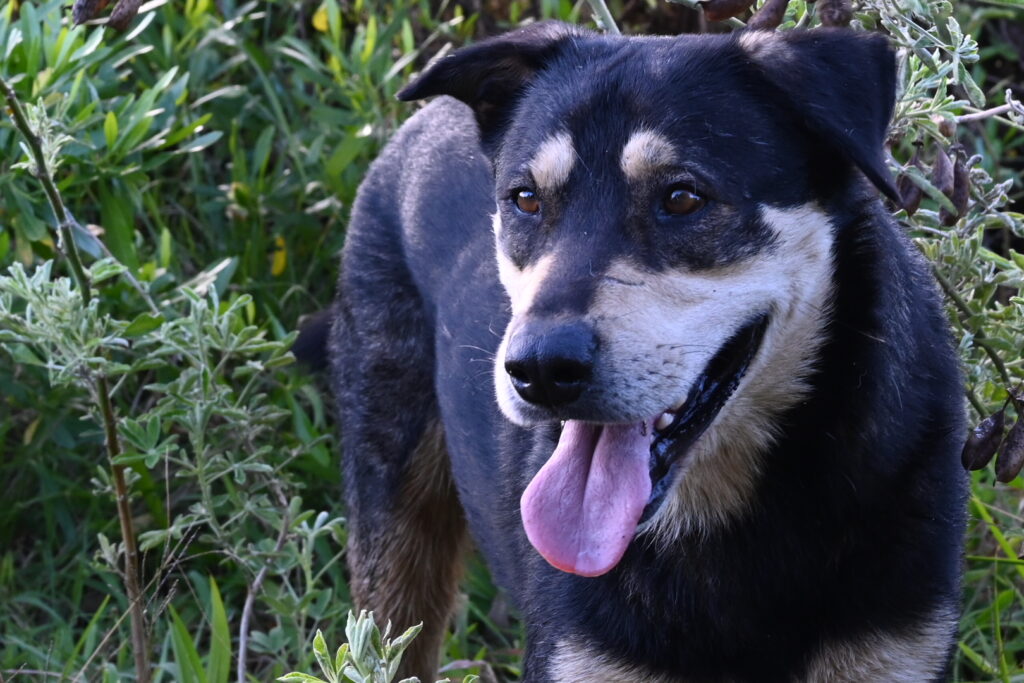
And when animal companionship is not sufficient motivation, there are also occasional benches throughout the route:
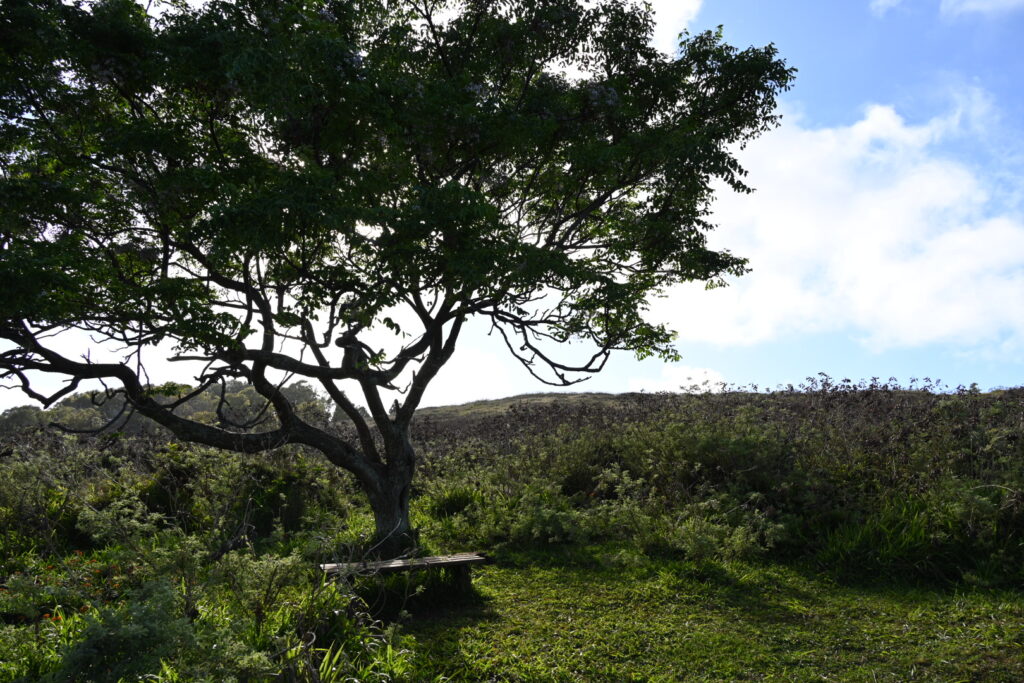
Please note that this trail is not visible on AllTrails, so we’d strongly recommend that you have a local guide.
Despite the spring weather, our expedition guides were still regularly offering out electrolyte tablets. We haven’t needed any, but I would suggest bringing some for warm-weather expeditions. (Though not for LifeStraw water bottles, as ours would both filter out the electrolytes and get gummed up in the process.)
We passed a wild horse along the way:
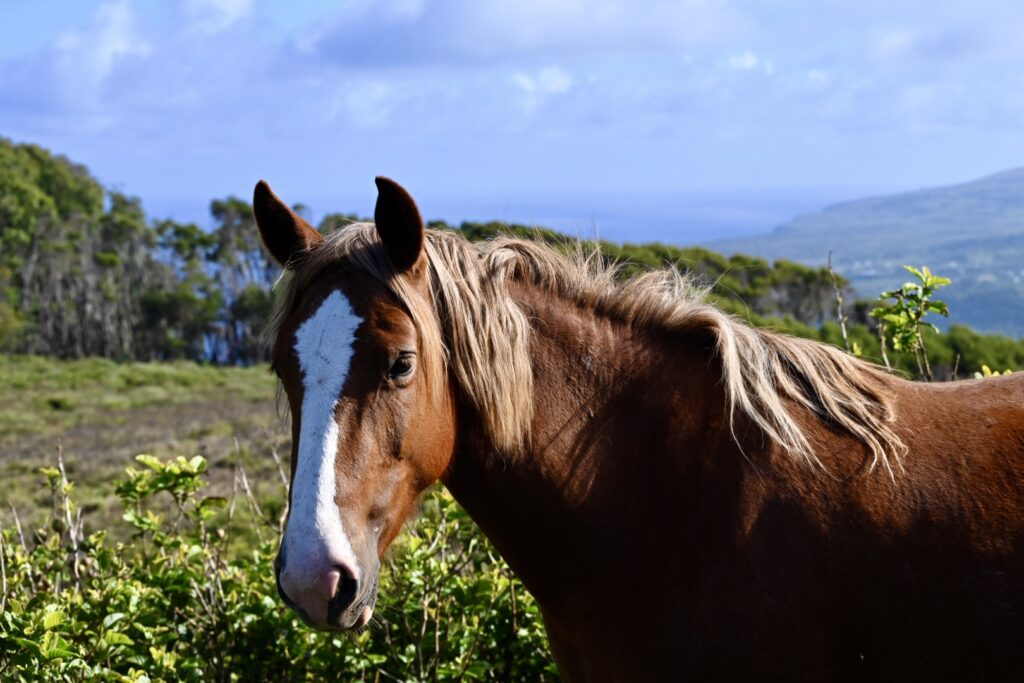
And then – we reached the edge of Rano Kau!
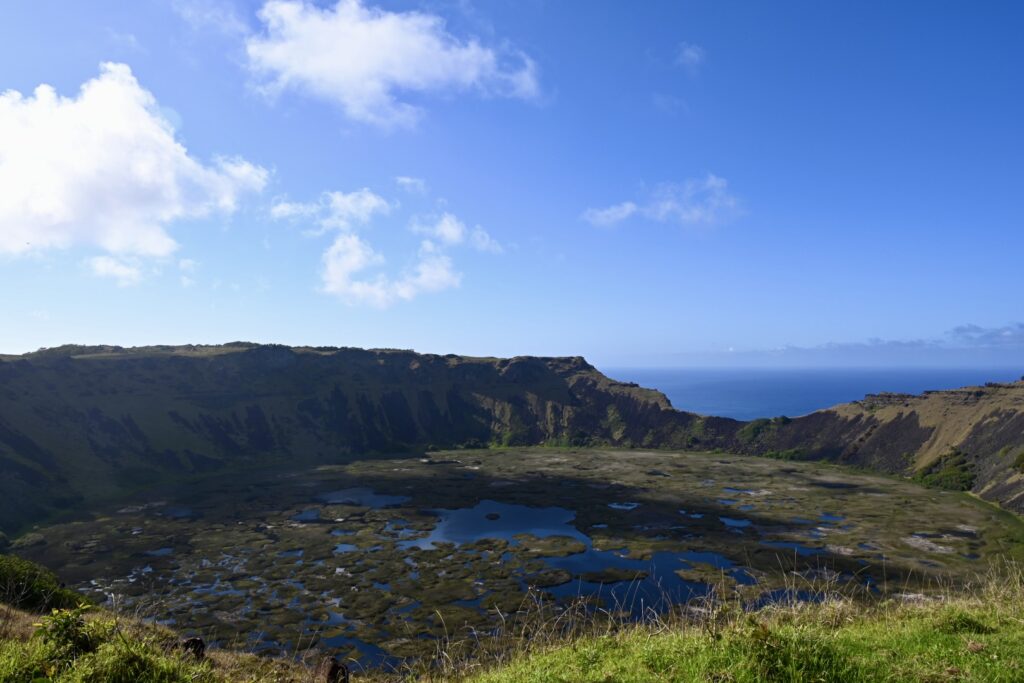
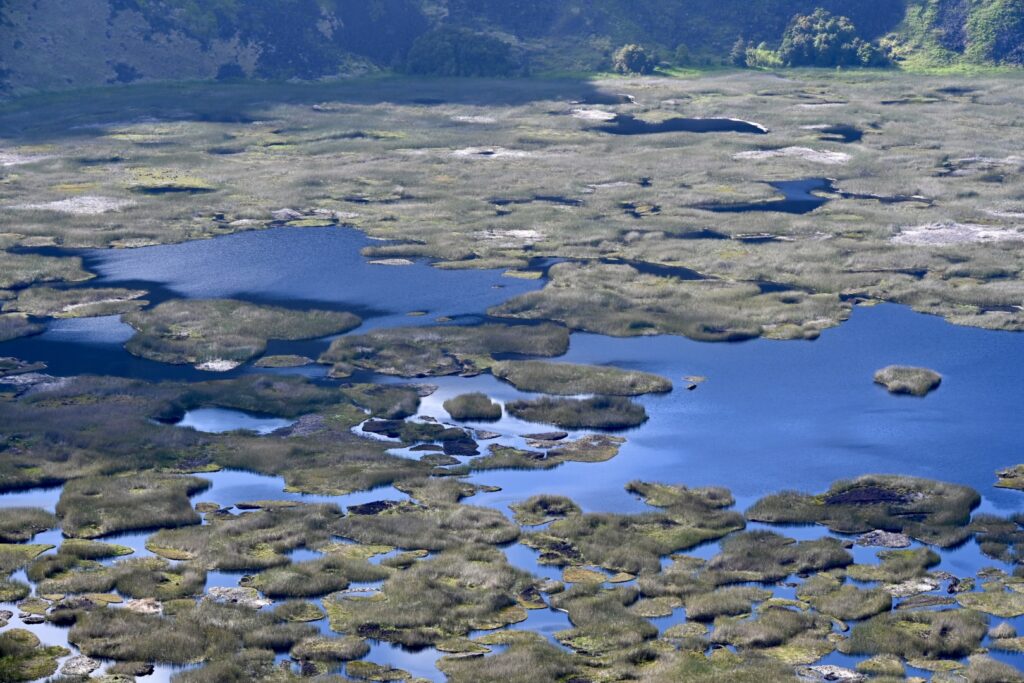
Rano Kau is an extinct volcano with a crater lake, one of Rapa Nui’s three bodies of fresh water. The lake is almost a mile across and has its own micro-climate. There’s a wide range of vegetation in the lake and along its edge, including taro, reeds, grasses, figs, and even a small forest.
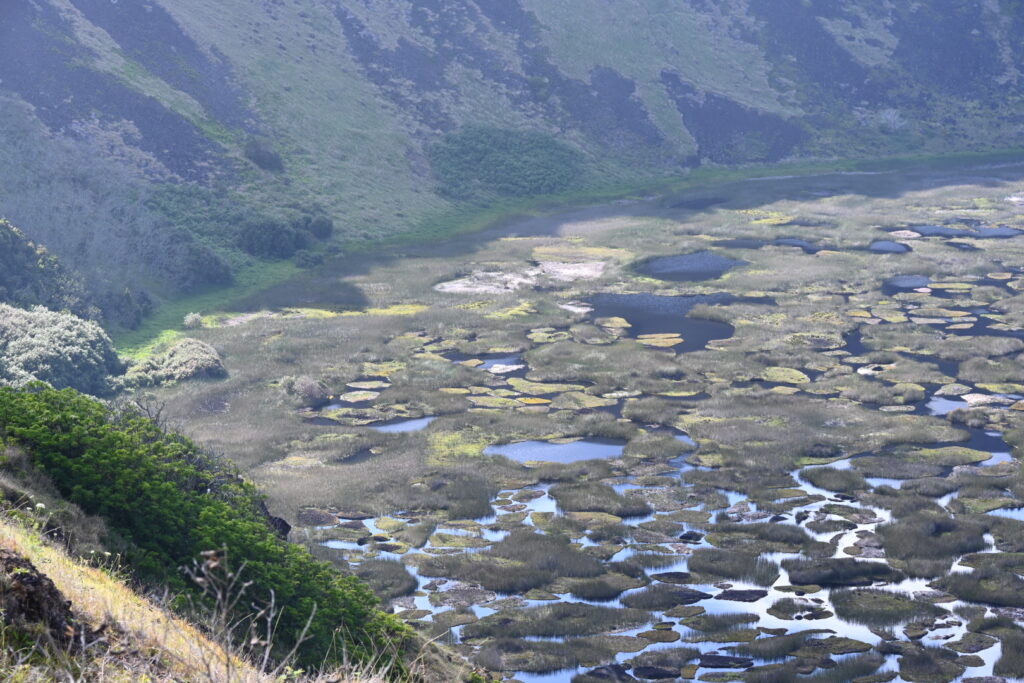
There are also some petroglyphs at the site, specifically those of the birdman cult:
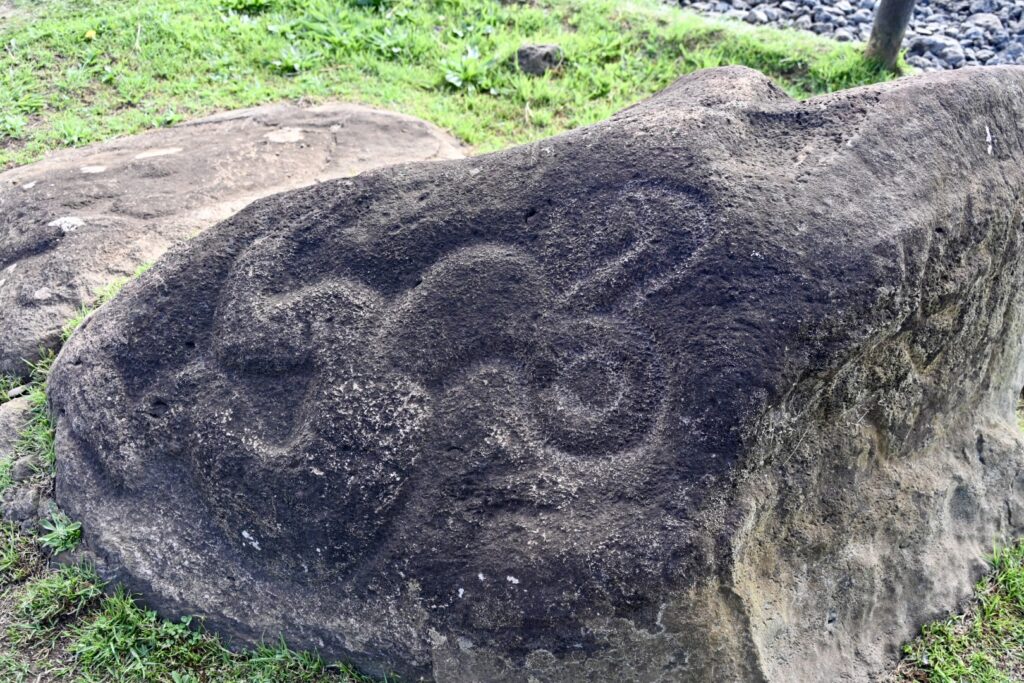
You can see the beak to the upper right hand side of the image. (Try tilting your head to the right if you’re having a hard time seeing it.)
We took in some scenic views of the rest of Rapa Nui:
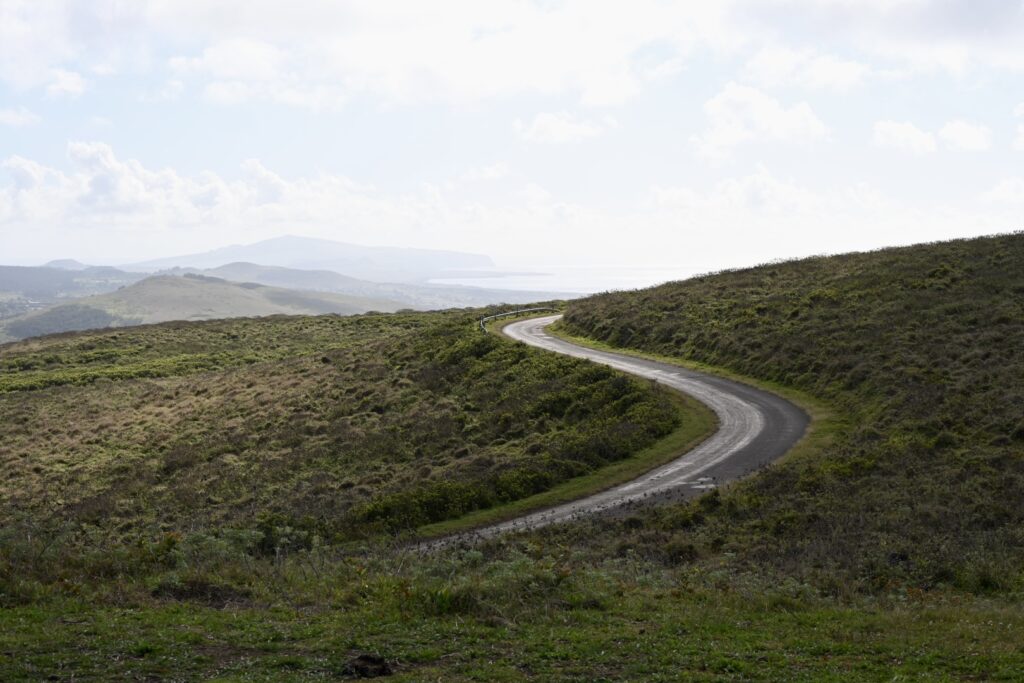
I climbed up to the highest point for one last shot of the crater:
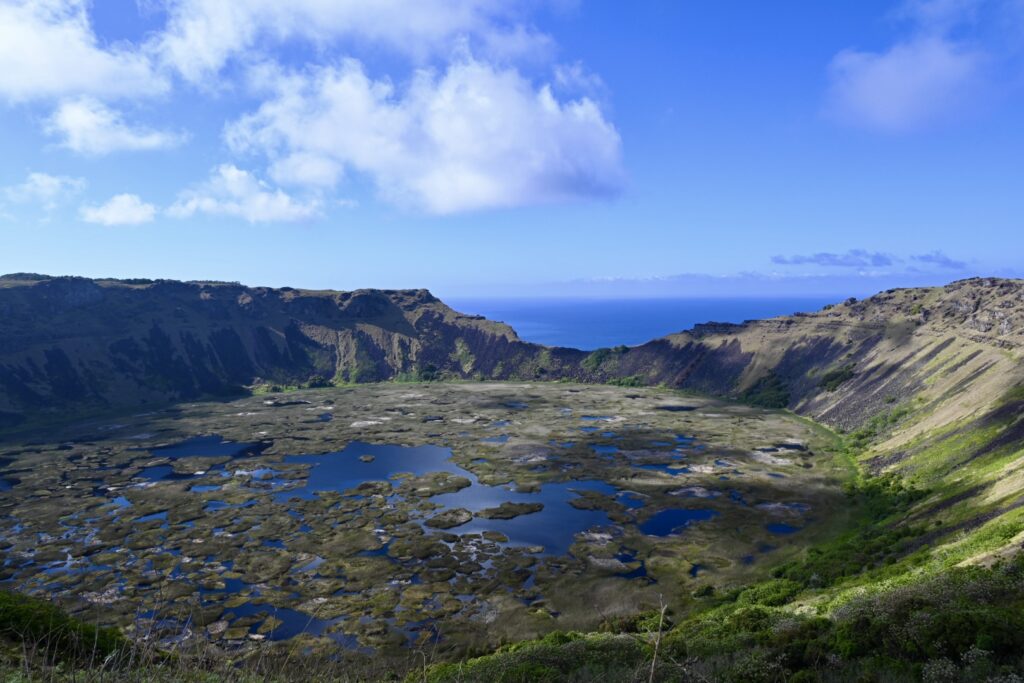
And then it was time to hike on toward the village of Orongo for those so inclined. (Some elected to just take the bus instead, which was completely fine – great to have both options.)
I spotted a finch along the way:
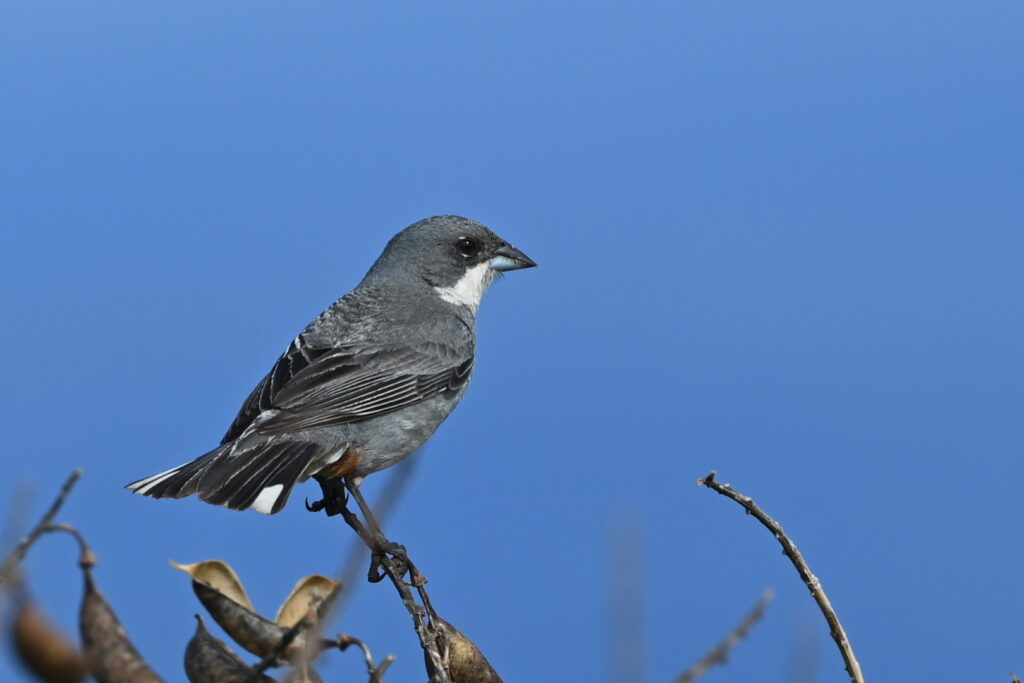
The elevation flattened out considerably, but the vegetation also closed in around us. Nothing we couldn’t manage, but worth considering a long shirt to avoid being scratched by branches!
We enjoyed seeing the crater from a range of angles.
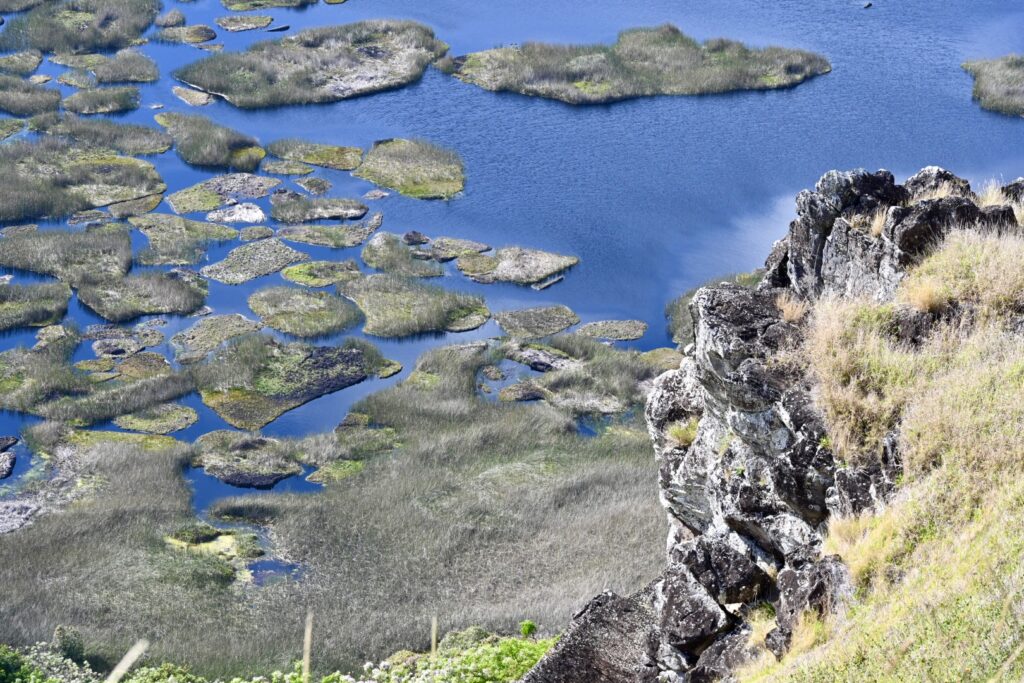
I found the contrast of the volcanic stone and the deep blue water particularly striking.
We reached Orongo perhaps 20 minutes later. There’s a visitor’s centre there with bathrooms and some information regarding the village, but we made quick work of it – it’s quite crowded, and it was easier to hear Hugo out in the open air.
The ‘birdman’ (tangata manu) was the winner of an annual ritual on Rapa Nui to collect the first tern egg of the season. Prominent men were selected to take part, who would then appoint two hopu – men of lesser status – who would swim to Moto Nui with provisions and a basket to await the terns return.
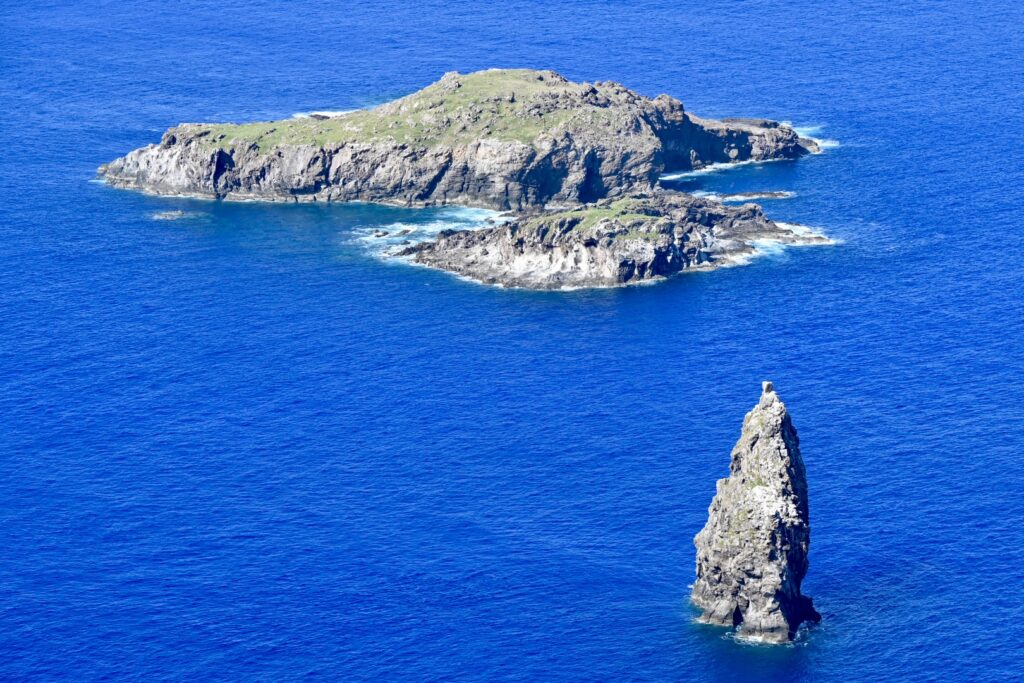
Moto Nui set amidst that vibrant southern Pacific ocean
The contest was extremely dangerous, and the hopu often died of the attempt due to sharks, drowning, falls and other misadventures – many of which were deliberate due to the competitive nature of the event. The prominent man whose hopu collected the egg would be the new king (tangata-manu) for the following year.
The hopu would arrive early on Moto Nui – well in advance of the terns arrival – and the prominent men would wait at the village of Orongo, which remains in remarkably good condition.
Apart from this one structure, which is caved in:
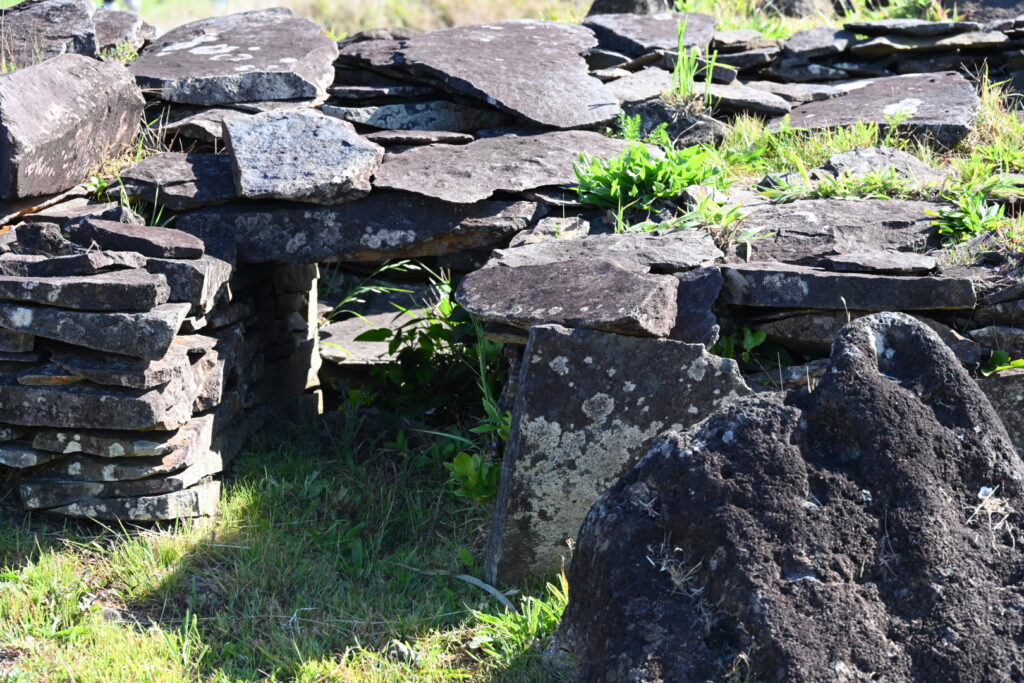
This one is arrayed as a cross-section so you can see what they look like inside. The structures were primarily used for sleeping, and all other living functions – cooking, entertaining, and so on – took place outside the houses.
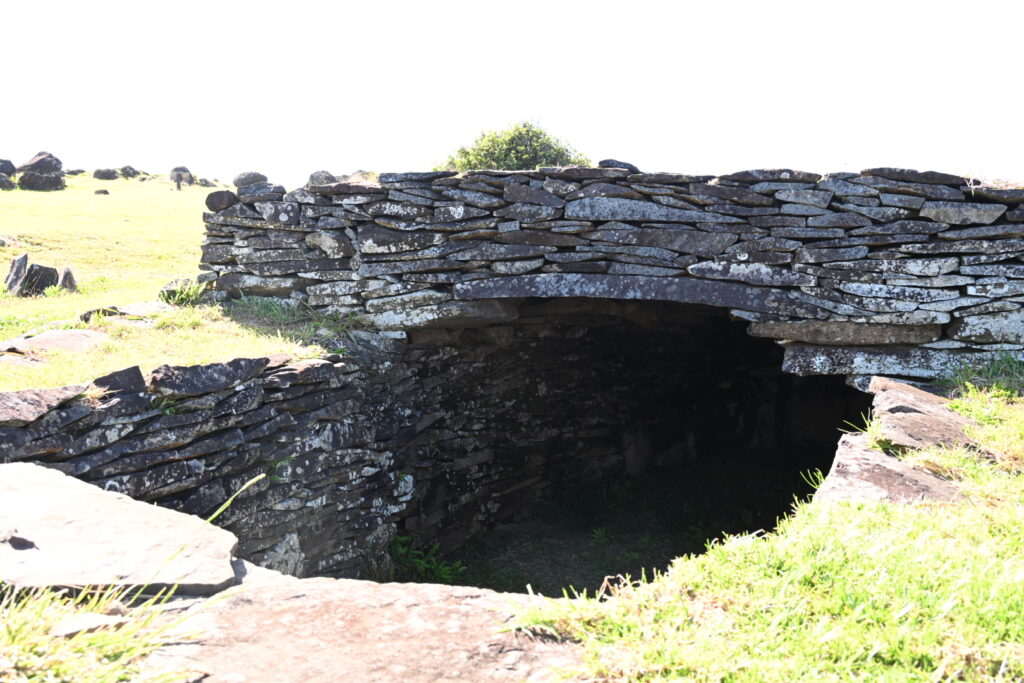
The doorways are extremely narrow, which both kept the structures relatively weather-tight and made them easier to defend against rivals.
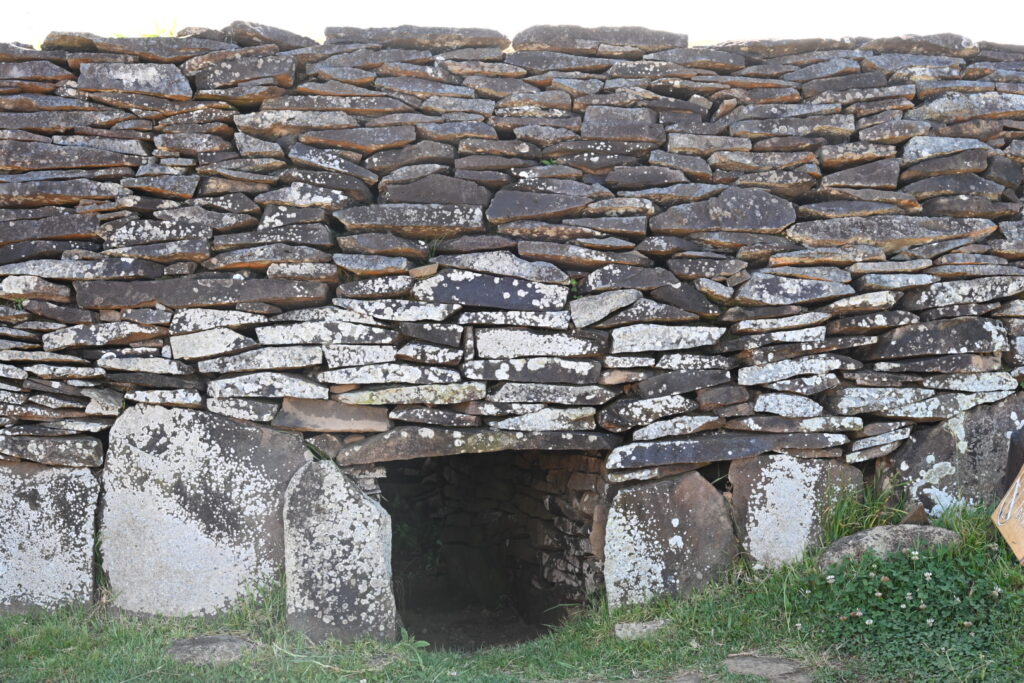
There’s quite a few of them arrayed along the cliffside:
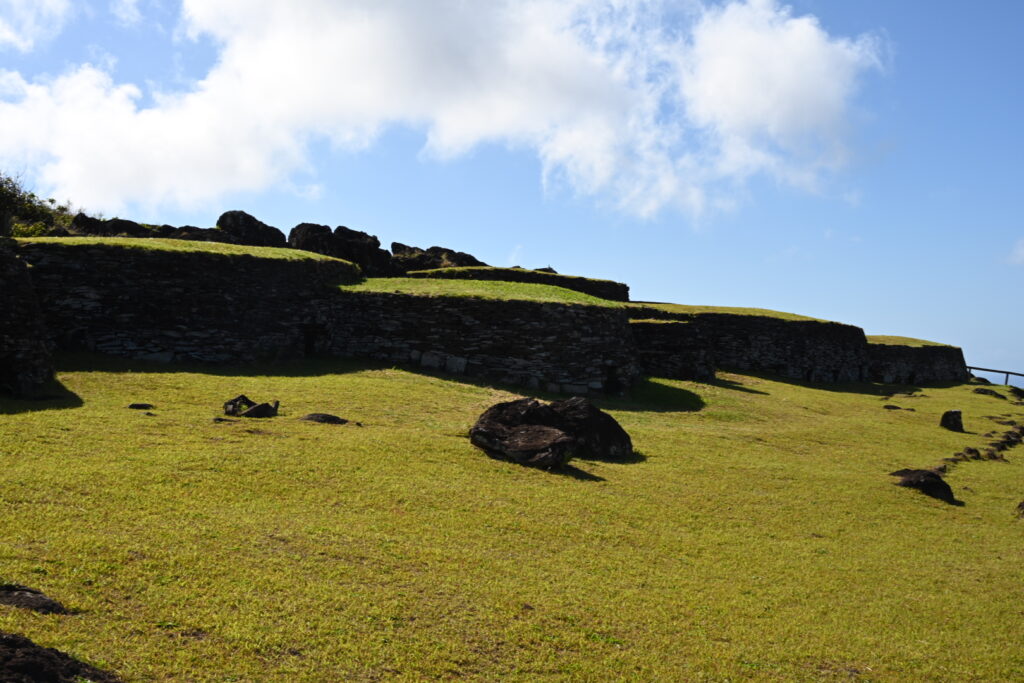
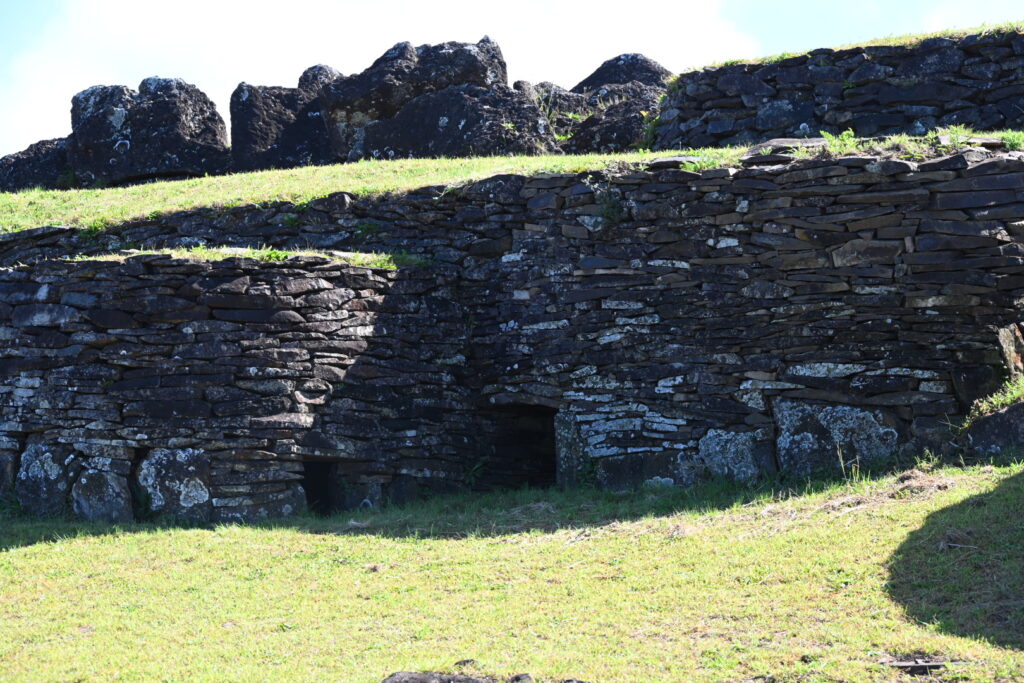
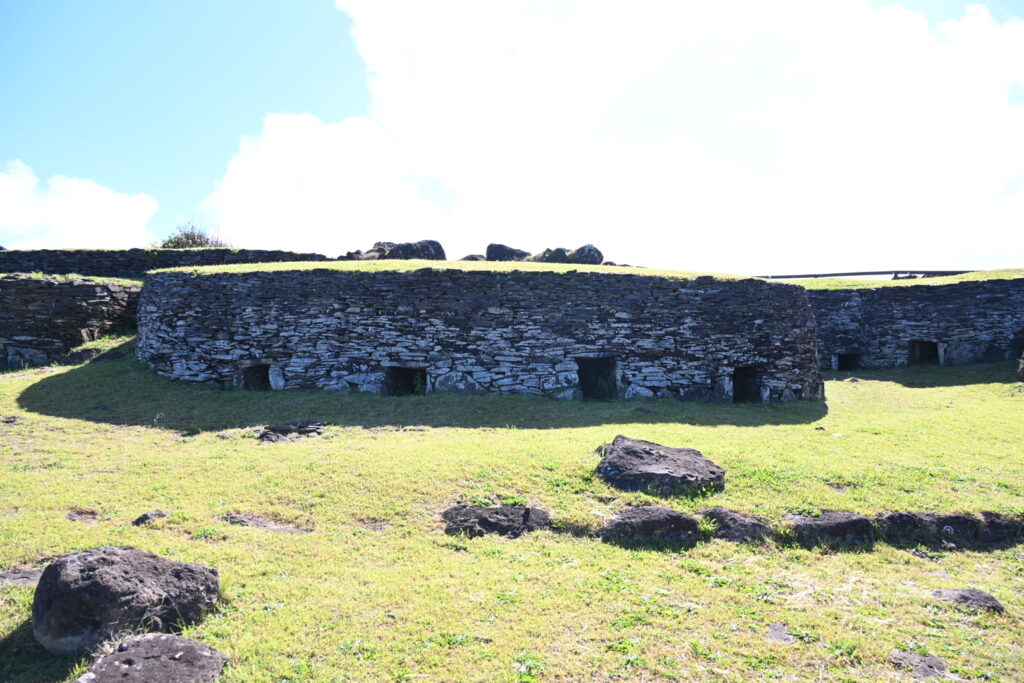
And several of the original petroglyphs remain:
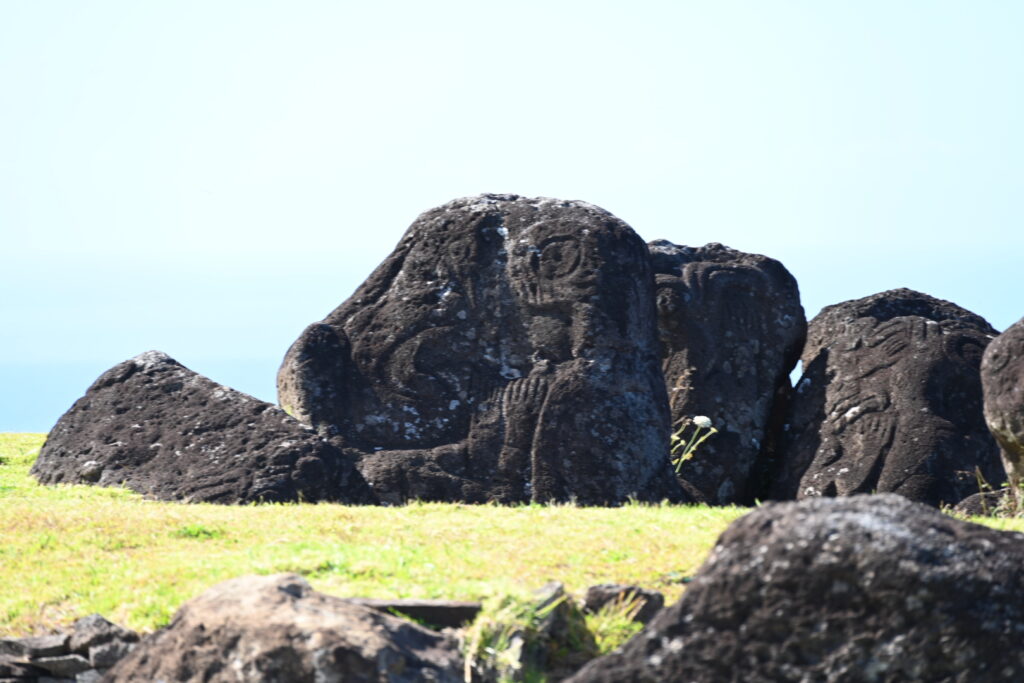
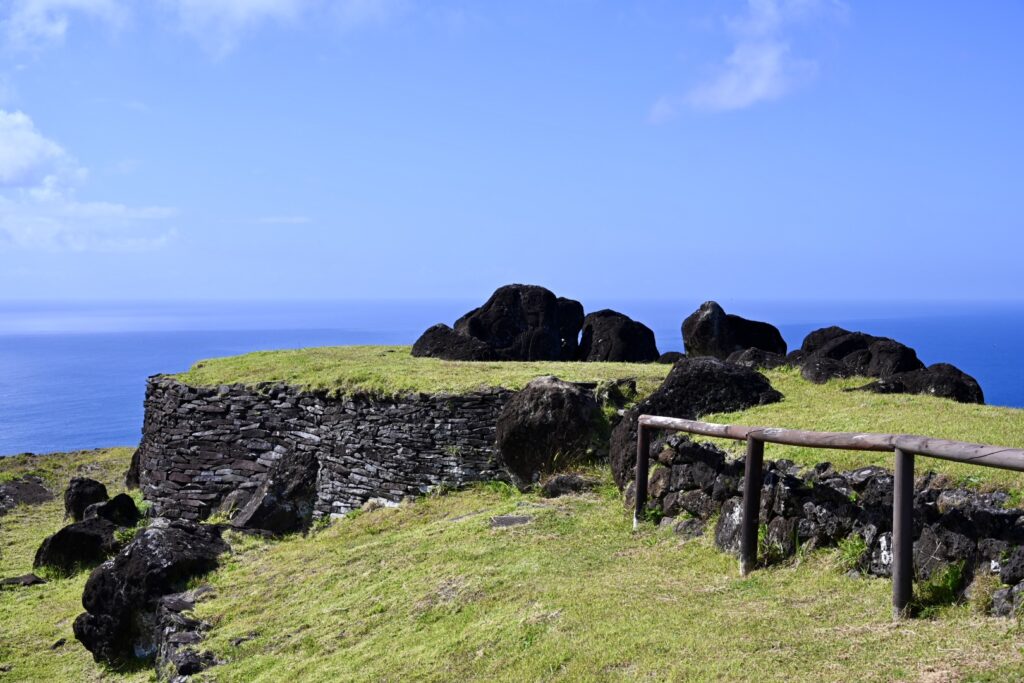
Though this particular structure is in danger of collapsing due to erosion and the weight of the stones on top. (Due to its perilous position at the edge of the cliff, it would be extremely difficult to bring in the machinery needed to shift the stones or otherwise reinforce.)
We then continued around on the circular path, back past the visitor’s centre – which now had a significant line for the bathroom – and onto the bus where we bid farewell to our hiking dog and returned back to Hanga Roa.
We had hoped that we might be able to get the bus to drop us off on the main street but unfortunately we were approaching the Cloud’s drop off point from the south – so it wasn’t on the way. But the regular shuttle arrived mere moments after we returned.
The plan for the afternoon – find a restaurant, do a spot of snorkelling, and pick up a few souvenirs. Simple, right?
Finding a restaurant proved more challenging than we had expected. Though we had internet access through our global eSIMs, not all restaurants had up-to-date information regarding their hours. We stopped at a few places that were supposed to be open, but would not open for at least another 30 to 60 minutes.
After a brief but fruitless walk, we decided to return to the Pea Restaurant which was directly next to Playa Pea – a spot known for its sea turtles, where we hoped to snorkel after lunch.
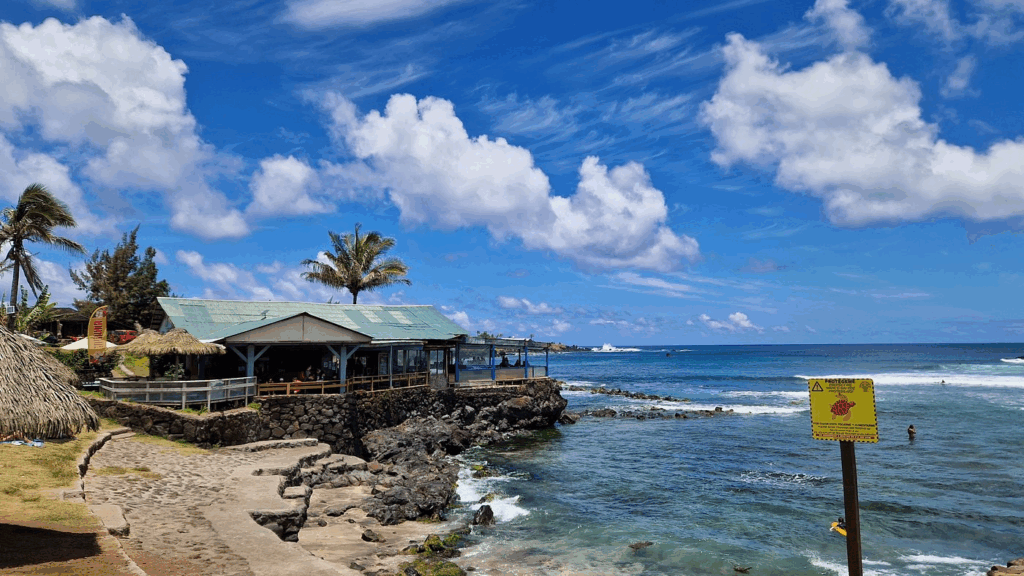
Photo Credit: dianedinky, TripAdvisor
Considering that we fully intended to get changed in their bathrooms, we figured the least we could do was buy lunch from them first. And it was pretty good!
My son and daughter each had a chicken sandwich:
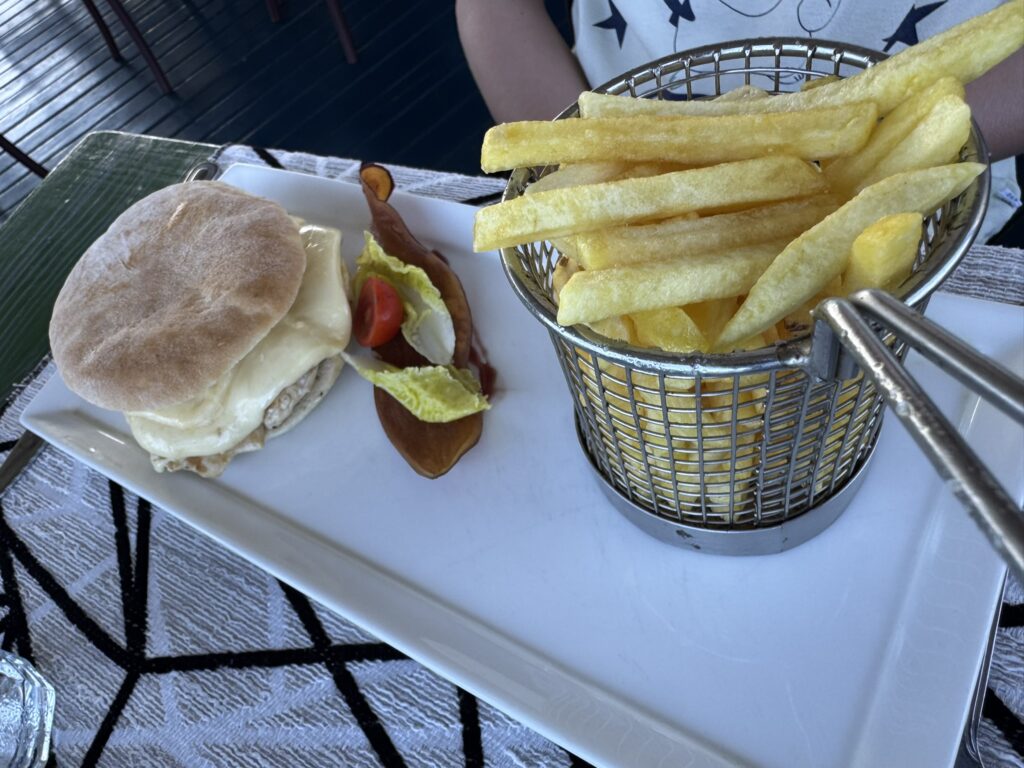
My wife had the shrimp, which were quite good:
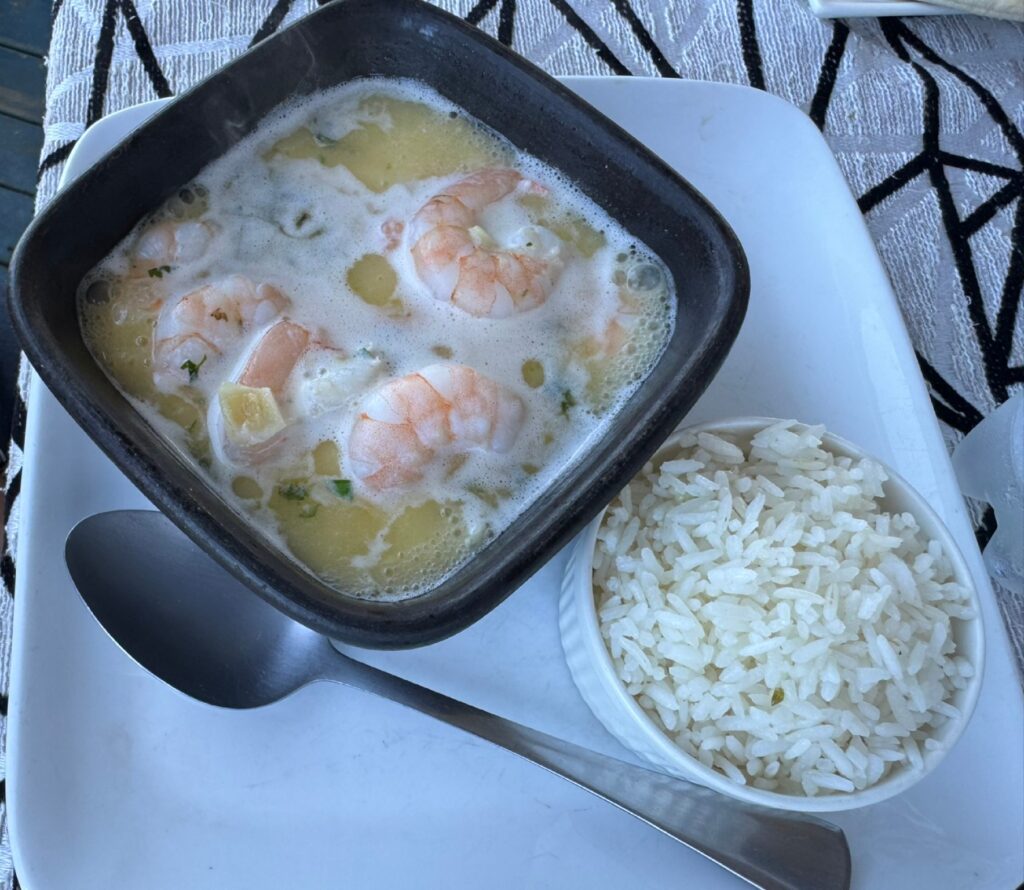
My daughter tried a few and really liked them, which is high praise.
And I had the local fish, which was a huge slab of tuna:
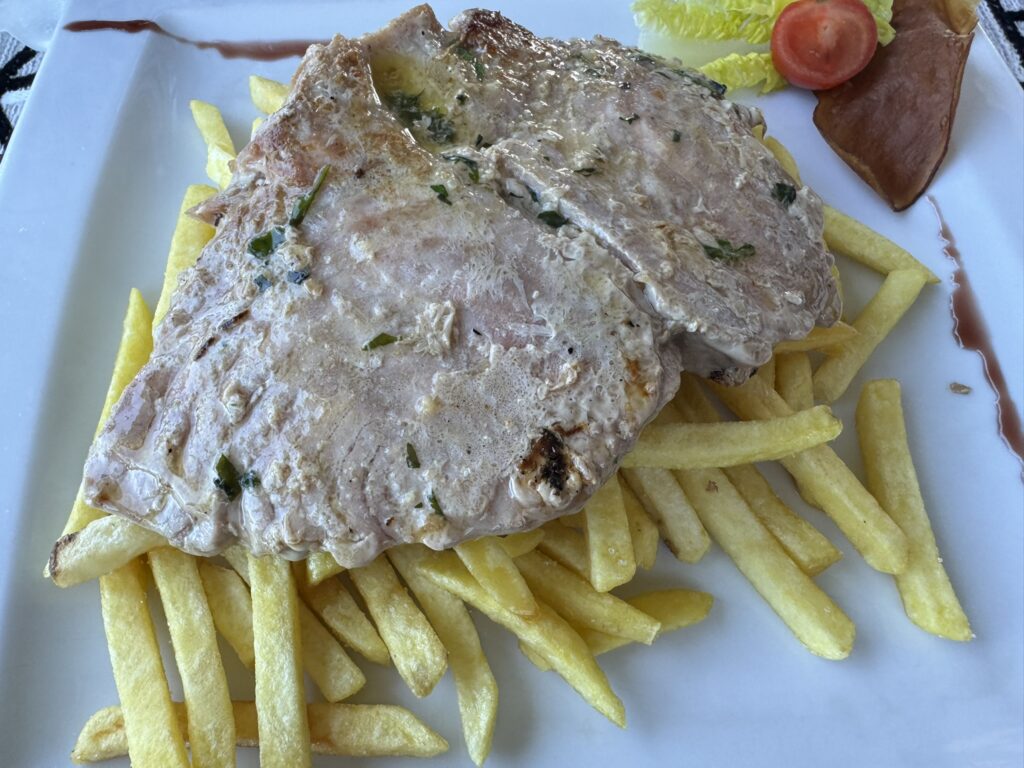
We had no problems with making ourselves understood in English – though I do know a bit of Spanish – and I was able to pay the bill with iPhone’s Apple Pay. Handy!
We also had a lovely view:
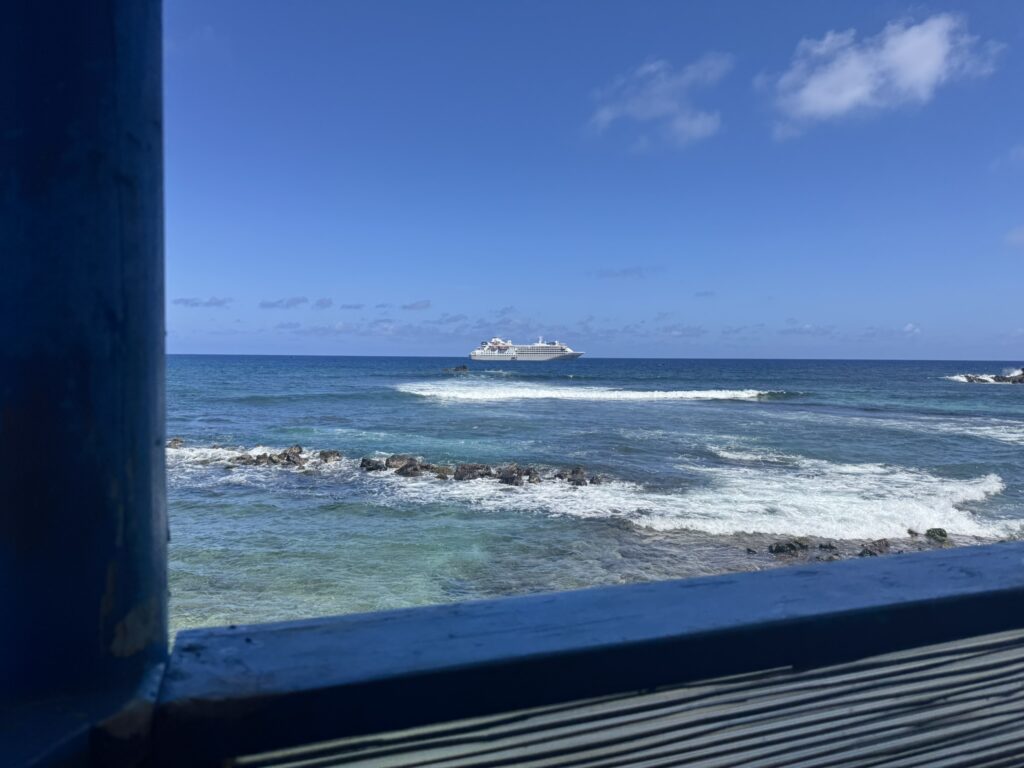
The total charge came to somewhere around USD$85 – very reasonable.
Having paid the bill, we then entered the restaurant’s bathrooms to change into full stinger suits as inconscpicuously as possible. Which – if you’ve ever seen a stinger suit before – is very conspicuous indeed.

Stealth mode – activated! (Image Credit: SlipIns.com)
Amazingly, we all managed to change without being thrown out of the restaurant.
Then it was time to snorkel – and what incredible snorkelling it was:
The water was cold, and so we did not last terribly long – but definitely worth the added effort of carting our gear off the ship.
We then squelched our way back to the restaurant and once more changed in the bathroom. We did briefly hold up one of the patrons, but at that point our deed was done and we made our escape.
Off for some souvenir shopping! We passed Playa Poko Poko along the way – this is another of the swimming spots that my wife considered:
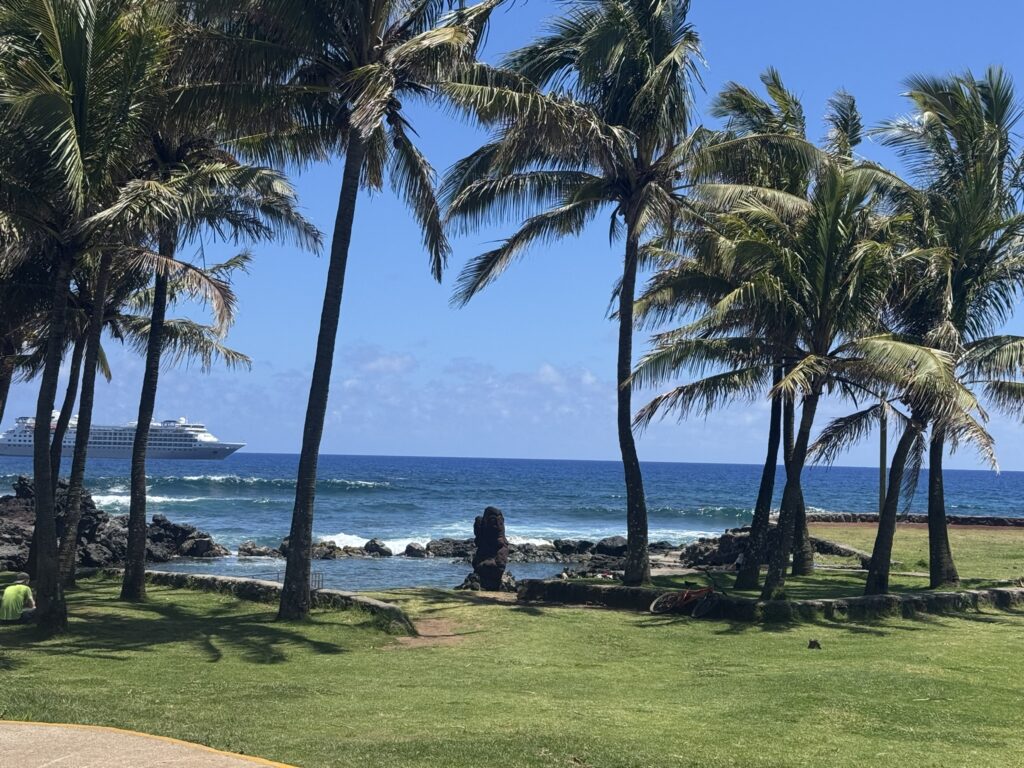
Nice and sheltered, though unfortunately none of the bathrooms were open despite it being Saturday.
We hiked the rest of the way to the Mana Gallery, which was highly recommended on TripAdvisor and Lonely Planet:
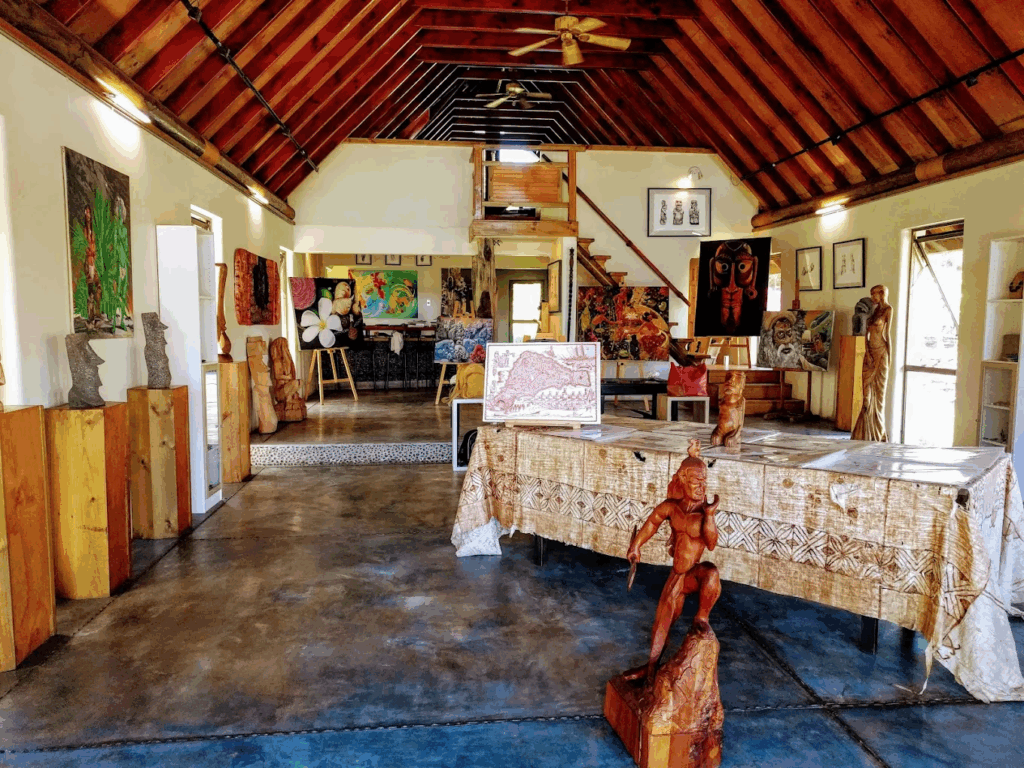
Image Credit: Nicole Miño C. via Google Reviews
Here we found exactly what we had hoped to find – a small stone moai that was carved by local artist Nano Ika with local stone:
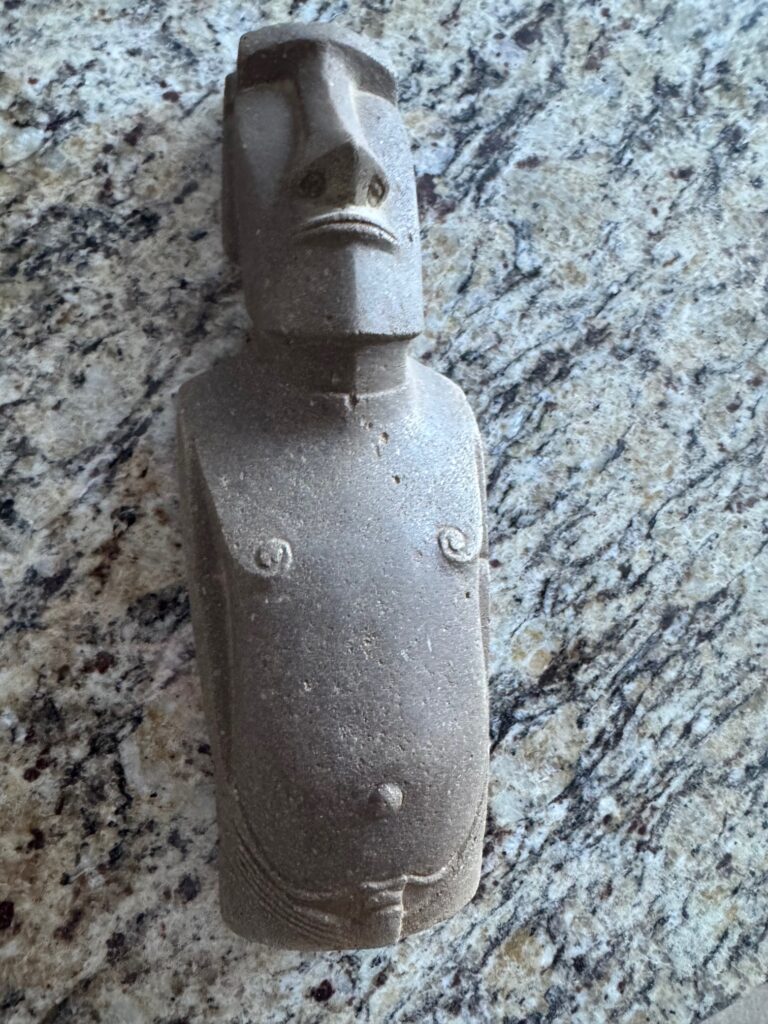
Although the price was around US$400, it seemed more than worthwhile to bring back an enduring and authentic piece of art from Rapa Nui.
Back to town, where we paid a visit to the souvenir market next to the Silversea shuttle dropoff point. My daughter picked up a Rapa Nui sticker to add to her laptop:
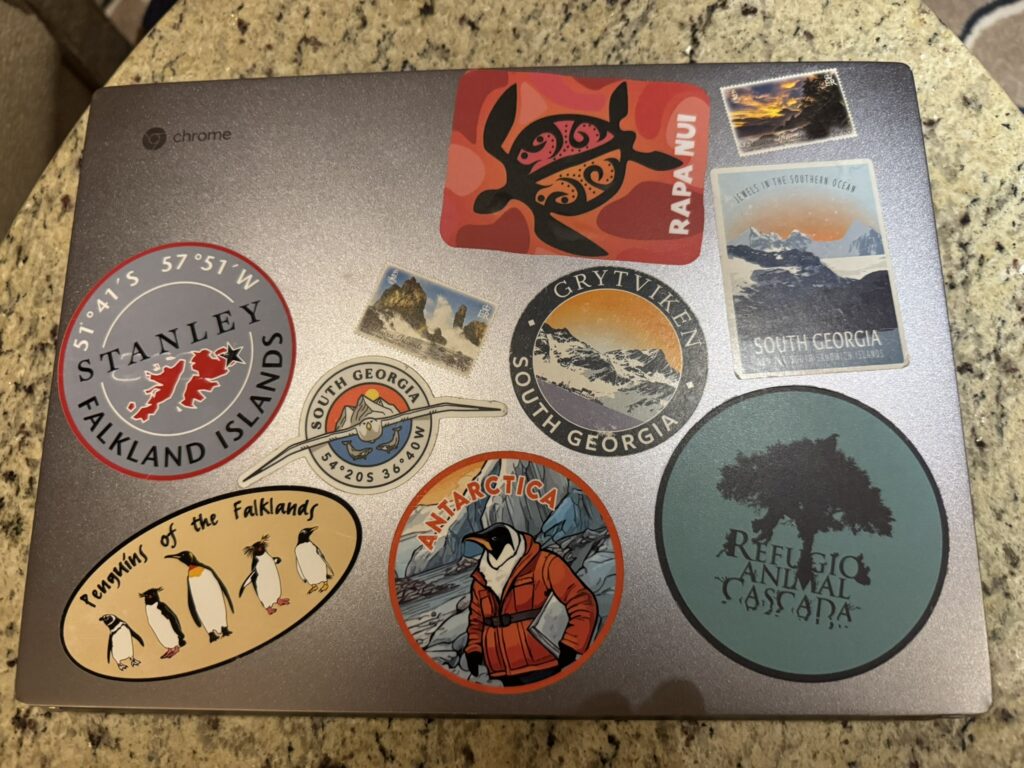
She also got a small white stone turtle, and we had time to briefly visit the nearby playground:
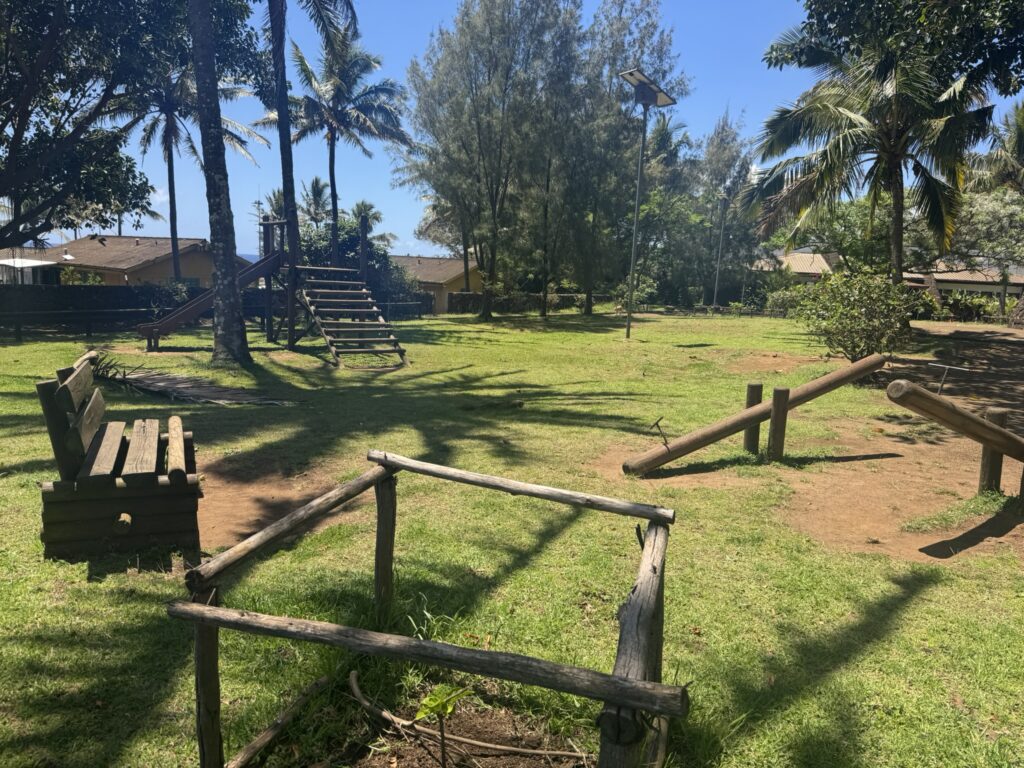
And then it was most definitely time to head back to the ship.
We enjoyed another pisco sour out on the balcony, then I popped up for trivia on my own – both kids were wrecked, so they sat this one out.
I was the only one present from “The Lucky 13” (named after our most frequent score), so a bunch of us came together to form a supergroup – which came first! I knew that Silvio Berlusconi was the Italian PM known for his ‘bunga bunga’ parties, and that Helium was the lightest element. I also learned that the recent movie that took 12 years to film was entitled ‘Boyhood’.
I went to shower before the briefings, but was surprised to find that we had very little hot water. There was also a strange buzzing noise coming from the ceiling. My wife investigated and found that the bathtub hot water had inadvertently been turned to max. This appears to have been redirecting the hot water from the shower. She turned down the bathtub hot water, and that fixed both the noise and the shower.
Off to the briefing and recaps:
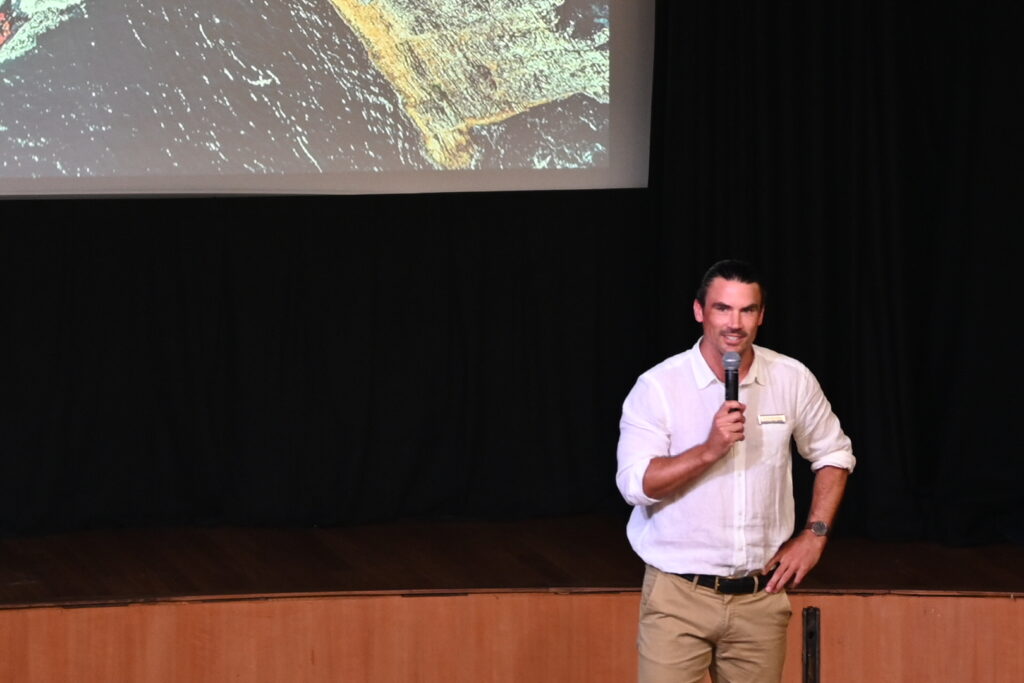
Peter basked in some well-deserved applause after asking how everyone enjoyed Rapa Nui – it was a fabulous visit, though far too short to even begin to scratch the surface of this remarkable place.
We have four full sea days ahead of us. The first few should be relatively calm, but we will have a period in which 4.5 metre waves will be washing through. We’re no strangers to these from our earlier Cape to Cape cruise, but it will take some adjustment after the placid seas we’ve enjoyed these past few weeks.
Still five full days until we reach Alexander Selkirk Island – such conditions do not bode well for a zodiac cruise (or for our landing at Robinson Crusoe), but a lot can happen in five days.
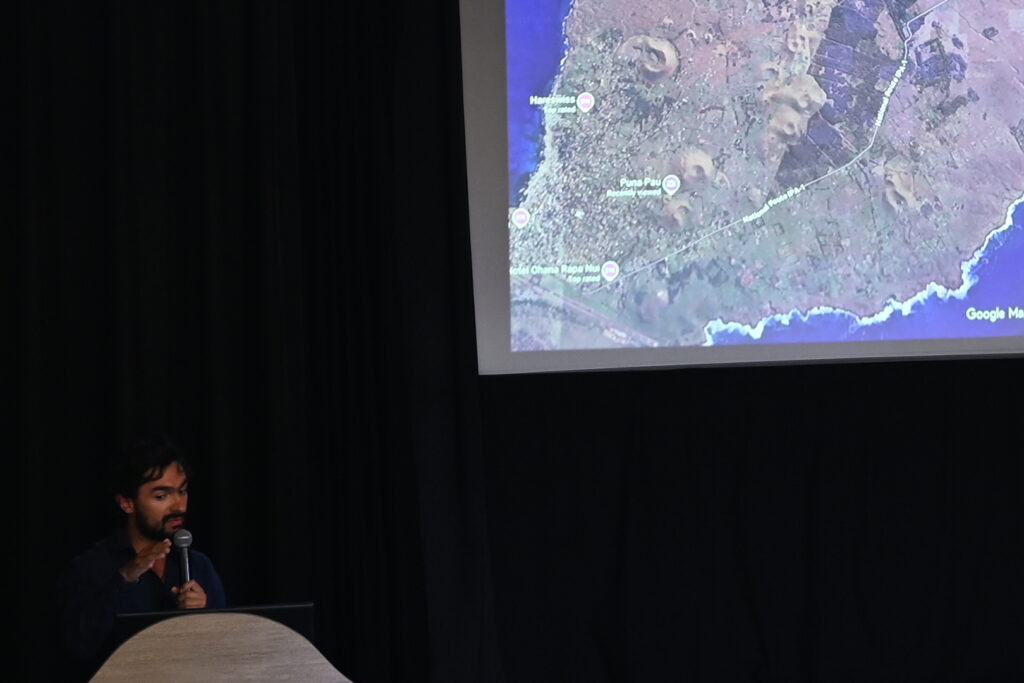
Manu provided an overview of the shield volcanos of Rapa Nui. I was surprised to learn just how fast lava can potentially flow from these types of volcanos – one can easily be caught in the flows from similar volcanos in Hawaii. These volcanos created the consolidated volcanic ash (tuff) that was cut to make the moai. Also, it’s the iron content of the pukao (hats / hair) that gives them their disctinve red colouring.
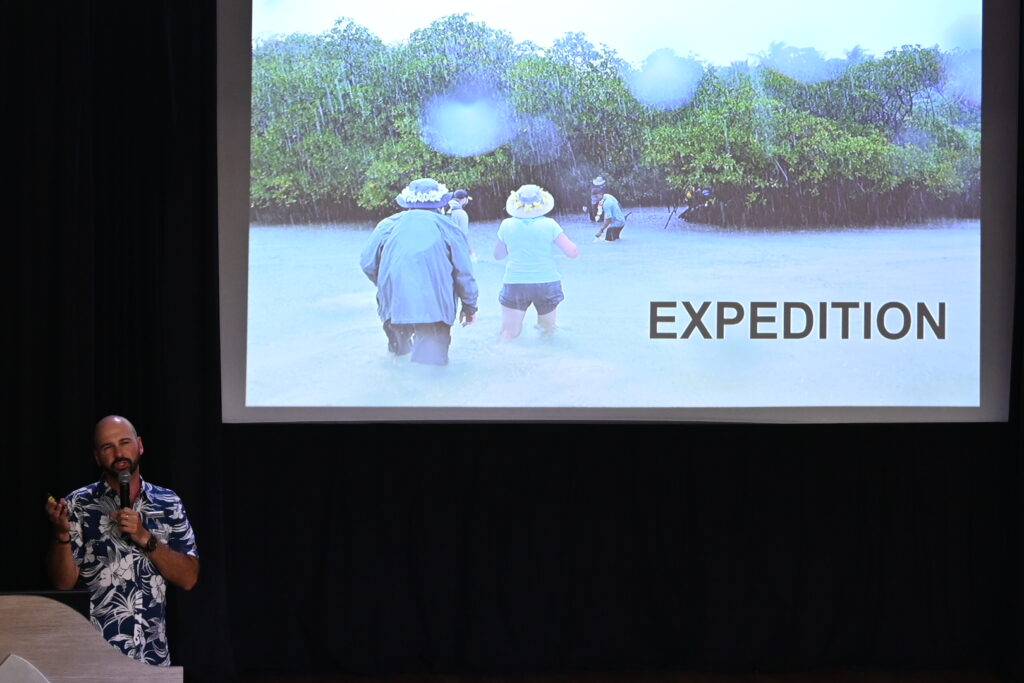
Chris provided a recap of the hike he accompanied, which had gotten lost along the way and had to make their own path through some heavy bushes to get back to the trail. But he countered that even they got off easy compared to some of the previous expeditions to Rapa Nui, which have been marked by rain, wind and fog.
He also discussed some of the invasive foliage on Rapa Nui, and efforts to reintroduce historic foliage like the toromiro tree. This is particularly challenging because the toromiro is also dependent on an extinct bacteria – but efforts are still ongoing. (There’s an interesting article about that here.)
Off to dinner at the Restaurant – my wife and I had the crab consumme for our appetizer:
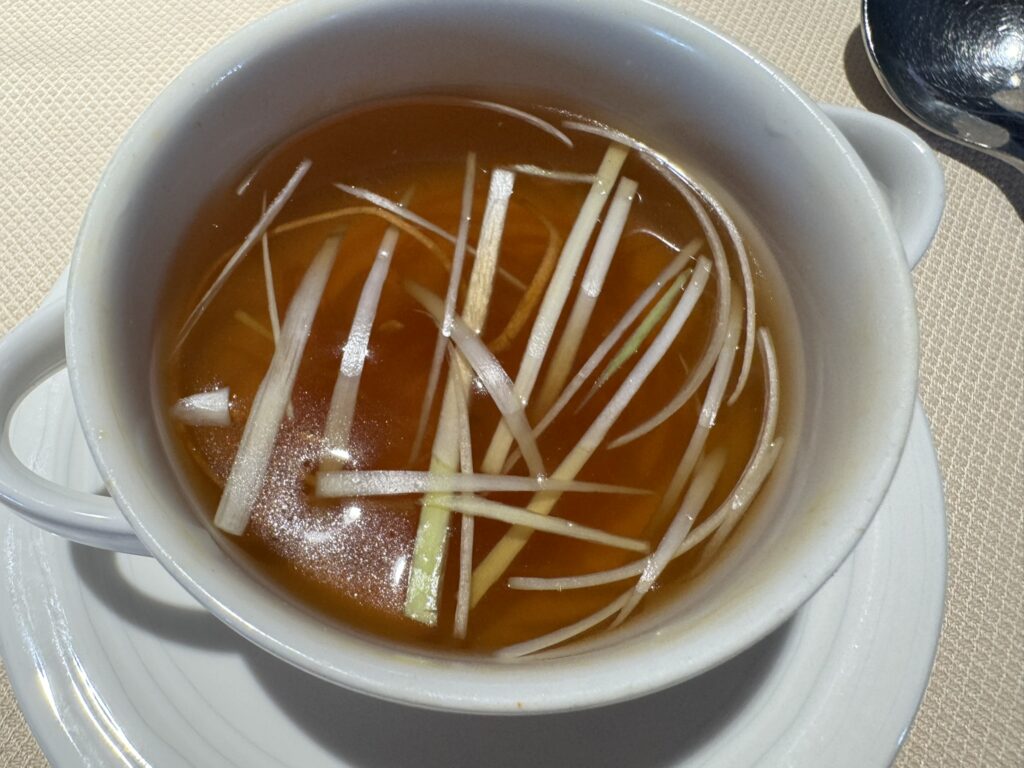
And the steak Rossini again for dinner:
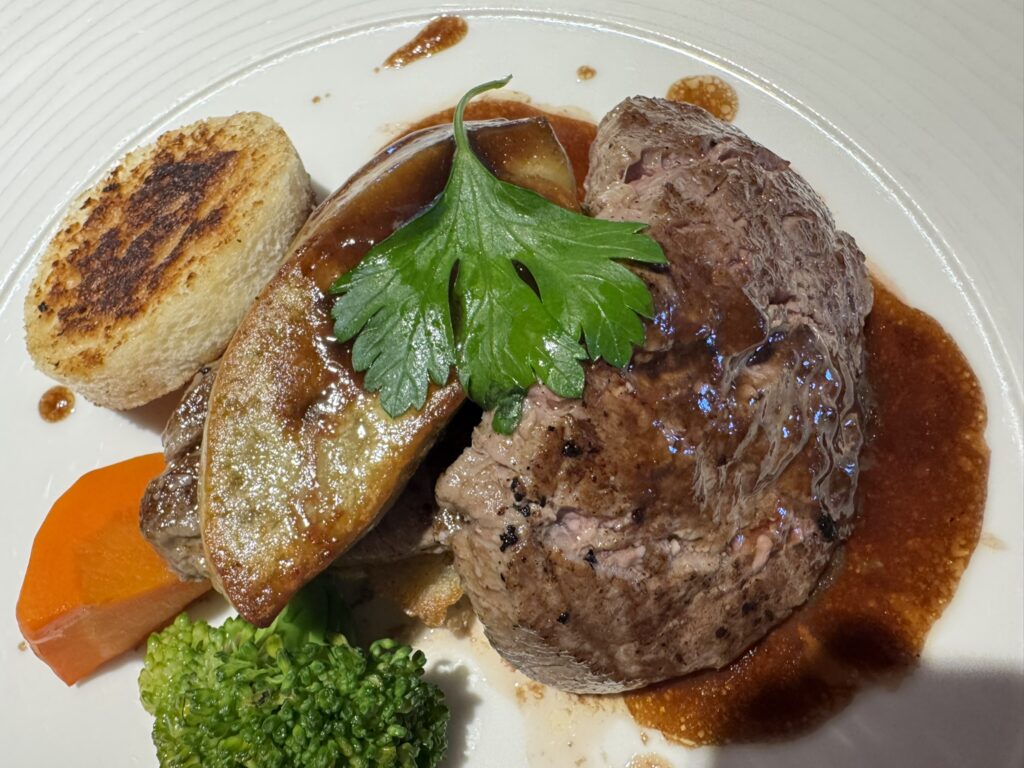
And I had the apple and walnut sable for dessert:
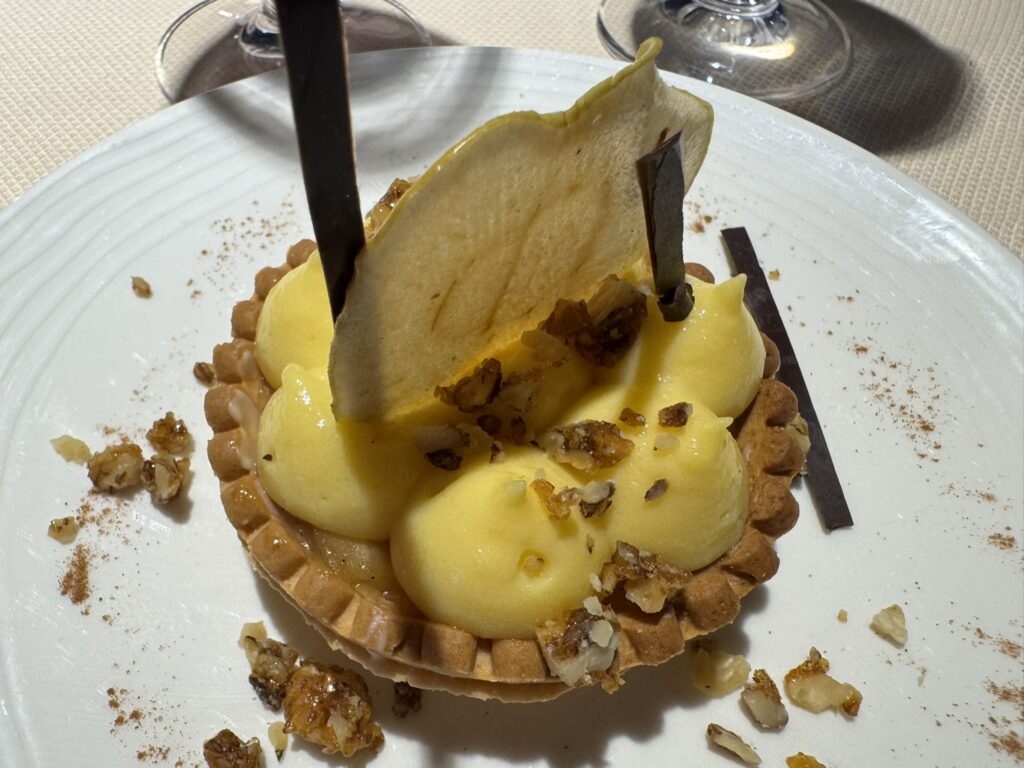
It was quite busy tonight – but our server Nyoman absolutely hustled to get us our food as quickly as possible, so there was no appreciable impact on service.
Time for bed! No time zone change, and a sleep-day tomorrow – secure in the knowledge that we’ve made our two top landings. It doesn’t get much better than that.
